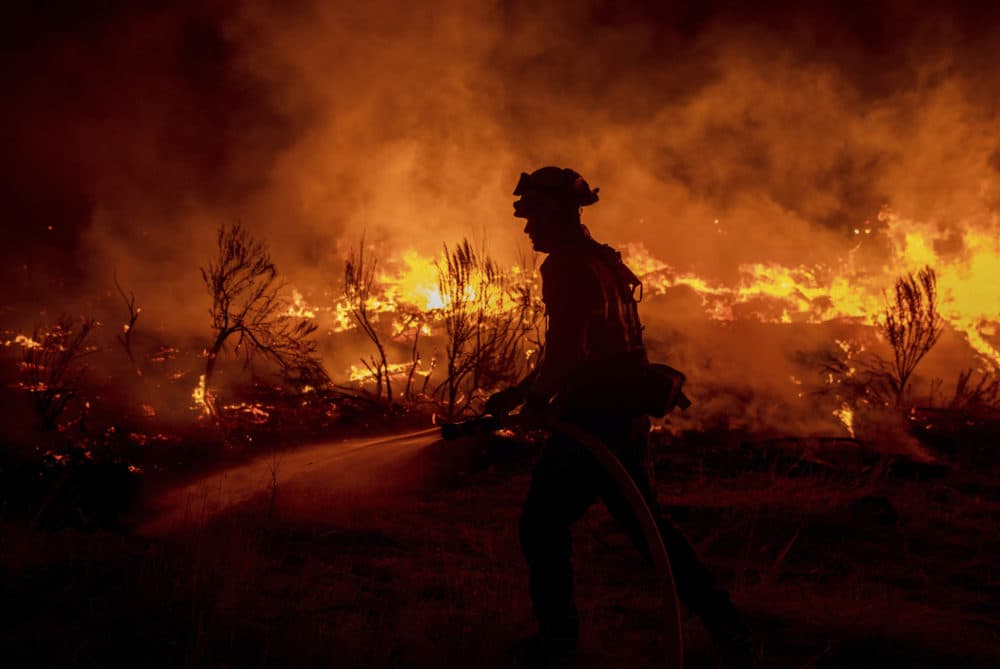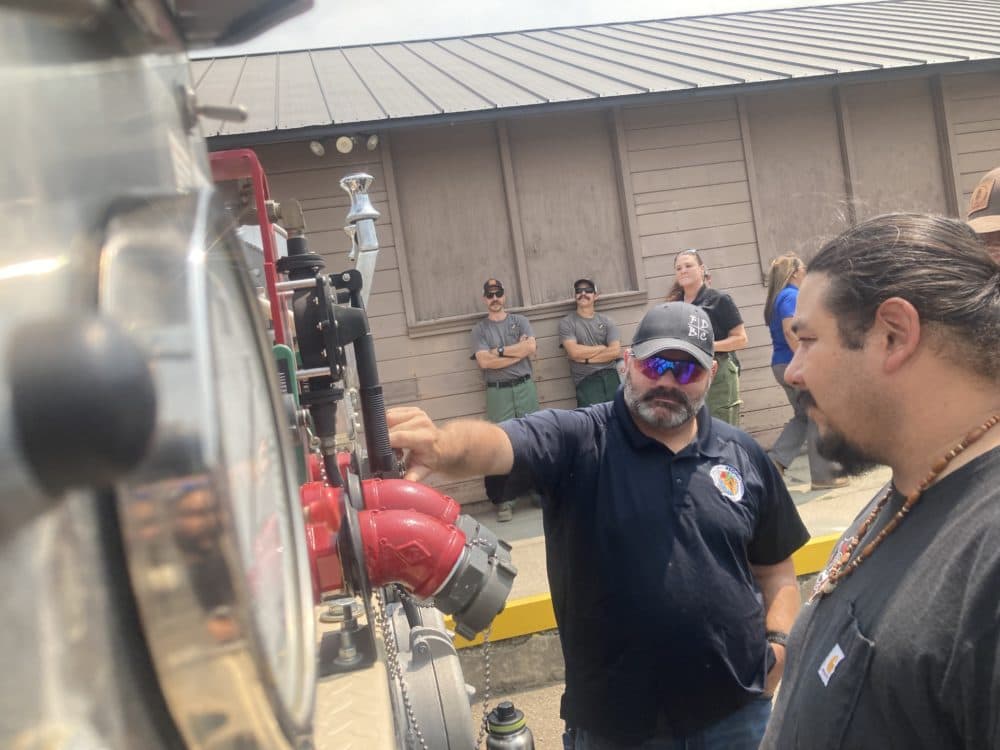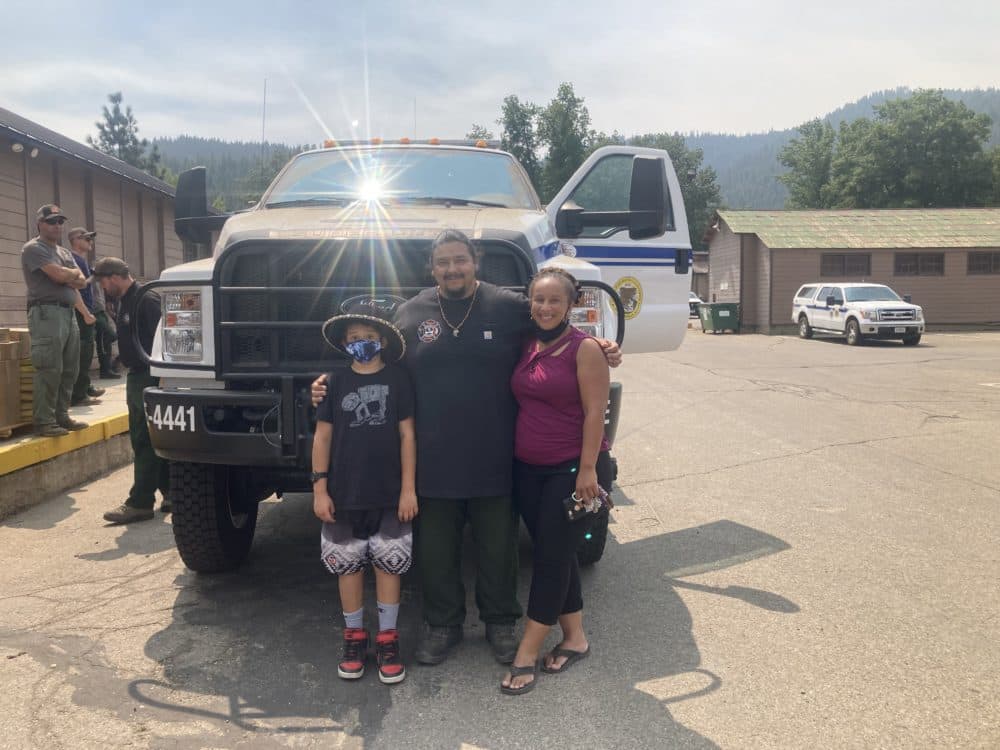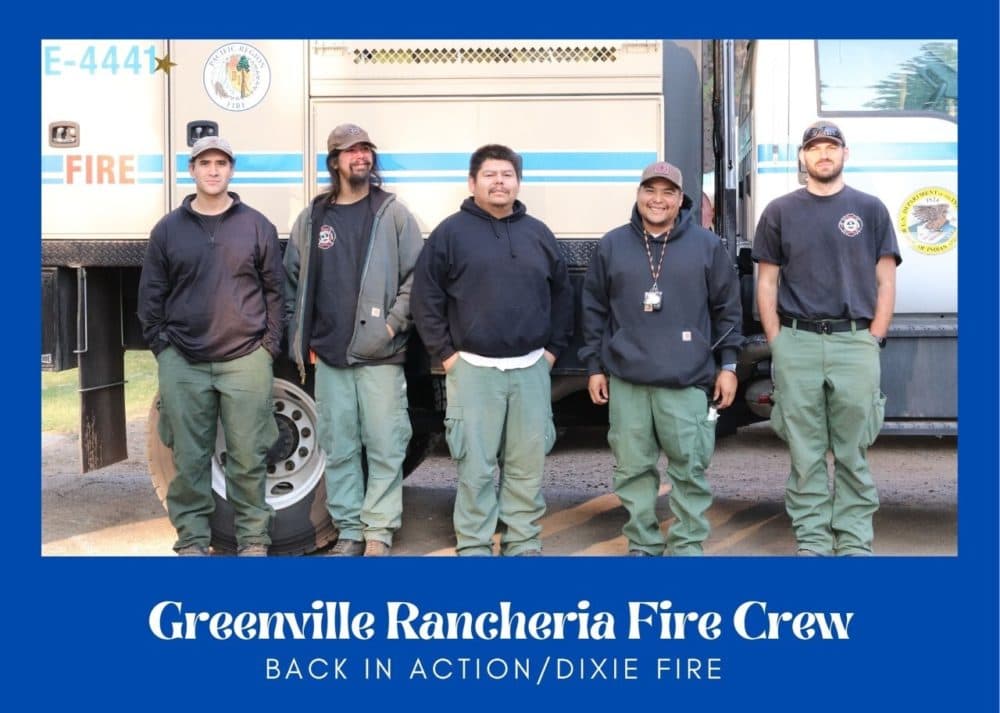Advertisement
'There's Literally A Dark Cloud Over Us': Firefighter Reflects On Dixie Fire After Losing His Town
Resume
The Dixie Fire, the largest fire burning in California, has scorched more than 770,000 acres. A few weeks ago, the intense flames destroyed the tiny town of Greenville.
Danny Manning, assistant fire chief for the Greenville Rancheria, says the fire burned down about 75% of the town with only a couple houses surviving. He’s now living out of a hotel room in a neighboring town because he can’t go back home.
“My house is around the valley in Taylorsville, but my sister's house is gone,” Manning says. “Most of my fire crews' houses got burnt down and then our fire department, our fleet and our tribal office — all that is gone — burnt to the ground.”
The fire department lost its new fire truck and an older vehicle, he says, so the station had to start from scratch. With the help of the Bureau of Indian Affairs and the local U.S Forest Service, the station received an engine and all necessary gear to get back to work.
Manning and seven crew members from Greenville Rancheria are still actively working on the Dixie Fire.
The Dixie Fire brings flashbacks to 2018 when the Camp Fire ignited Paradise, a town situated nearly two hours from Greenville.


“This is what we do, we fight fire and some of it [similarly] happened to Paradise and we knew people that went through that not that long ago,” Manning says. “So it's like reliving some of it for them and for us — but at the same time, it’s us now.”
Manning is concerned about when the town will start rebuilding and when residents can return. He also wants to know when FEMA will step in.
“It just kind of seems like there's literally like a dark cloud over us because of the fire cloud,” Manning says. “It's a weird feeling where it's really gloomy for me, but if you drive 60 miles, you see people on the golf course just hitting golf balls in the green field and they don't even understand what you're going through.”
With pressure mounting on him as a leader, Manning admits there were times where he could have walked away. But once his family got situated after evacuating, it motivated him to continue fighting the fires. Manning says the crew wanted to continue helping the communities that were still being threatened by fire instead of sitting at home waiting for updates.

“It's always dangerous,” he says, “but you put in mitigations for the danger so you never put yourself in immediate danger.”
His crew is up in Grizzly Ridge putting in hose lays and doing backburns to try to save Greenhorn and Portola from the fire. It’s crucial for the team to stay out there because the fight isn’t over, he says.
“It's like a natural disaster. How do you fight a hurricane?” Manning says. “Sometimes you just got to back out and try to keep everybody safe and then jump back in when it's an opportune time to keep fighting it.”
Ashley Locke produced and edited this interview for broadcast with Todd Mundt. Camila Beiner adapted it for the web.
This segment aired on August 31, 2021.